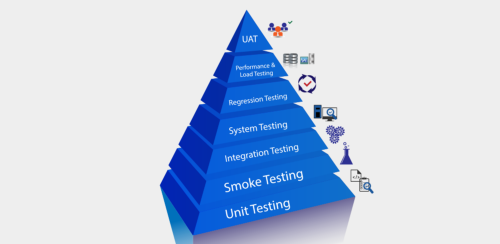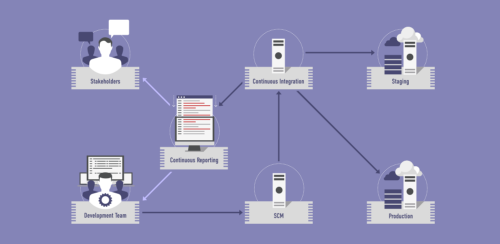API Testing:
Primer: Need and Approach
But then they were slow. Of course, that also meant one could enjoy the views, trees and rivers that passed by. But then, time was not a luxury as it has turned into today.
In a world where one is already whining about the absence of time-travel, it is nigh-impossible to conceive living without a swift, smooth and strong car- and one that doesn’t crawl but whizzes.
When Software ceased to be about that monolithic application and became all about tiny, but consequential, moving parts; it posed the same advantages and headaches for an organisation as the bullock-cart-man would face tucked inside a sleek car.
Like that small bolt and that invisible cable holding a huge car together, APIs or Application Programming Interfaces have been keeping the dance among applications, code modules, and back-end systems going well and uninterrupted. They make the anywhere, anytime and at-any-level scenario of agility, intelligence and reliance possible for modern-era applications. This is where the car of modern software stays integrated, spry and robust.
But this also means that the driver has to make sure that no tyre, no nut and no string go unchecked on the Formula-1-pace roads of today’s blistering-fast business. This means that APIs need the right tool-boxes to keep them well-oiled and well-maintained.
This is what API testing does. A way of software testing that comes under the hood of integration testing and keeps tinkering with aspects that ensure that everything is to keep the car running and cruising.
Bullock carts were easy. All one had to do was make a pair of sturdy wheels, strap them around a still-sturdier creature and sit back inside this fascinating contraption that swayed and crawled towards a destination.
This approach entails
- API check: To ascertain various on-ground issues and angles of an API
- Functionality: To evaluate how well is an API delivering on the outcomes that it was designed for
- Reliability: To inject the confidence that an important API aspect will not falter when it is supposed to be working flawlessly
- Security: To insulate APIs from the dents and cracks of threats that can ruin the whole system. Holding them forth against security requirements, authentication, permissions and access controls for all scenarios
- Load: To figure out how much and how smoothly can an API carry itself when it comes down to business peaks and volatility
- Consistency: To deliver APIs that work right the first time and every time
- Compatibility across devices, platforms, OS options: To build easy interoperability between diverse pieces of technology forests
- End-to-end experience: To translate the strength of a good API into a silky experience for the user at every point
- Performance: To subject APIs to real-world expectations and limitations, and unfolding inconsistencies and issues that can hamper performance
But is fixing a bad nut as much of that snap that it sounds? Do organisations even have the right screw-drivers?
Challenges
API testing can be an affair replete with expected and unexpected problems. A lot of them can be boiled down or slotted under these reasons.
- Complexity: Owing to an endless and chaotic tangle of protocols and standards as well as the number and versatility of components that developers have to handle; nothing is simple anymore. The same complexity also plays out in testing individual as well as a series of functionalities. Throw in the factor of interdependence, and you are staring at a huge ball of knotty
- Versioning: The ever-changing version climate can inflict a new set of expectations and constraints on an API- and every single time; especially when it translates into concerns around depreciation, default modes and missing values.
- Protocol diversity: It is not just the variety of protocols that pile up but also the unpredictability of their implications on each other and their adoption curves.
- Speed: One could take forever to piece together a punctured wheel in the days of the gramophone but not so much when one is around the Netflix-weaned generation.
- Limited skills, time and resources: Testing coverage is limitless and unrelenting. But the skills and hands to do that — well, they are not.
- Inadequate Simulation of environments:Can it be a cake-walk to configure databases, servers and other application-requirements to the T? Not really when we consider synchronous and asynchronous methods, connected-systems, numerous micro services and much more that adds to the environment.
In short, a garage would be a nice and fuzzy setting when one is talking about vehicles of the last century. But the digital roads of today can only make room for pit-stops — and super-fast ones at that. That’s why — automation.
Why automation?
If API testing continues to cough on every turn in the road, the application would have no hope for surviving on the highways of digital landscapes today. From confronting the challenges listed above; to ushering in accelerated, failure-proof and consistent tests that assure of test coverage and software quality, one needs to have pit-crews that automation empowers. More so when we are dealing with API testing where manual work and code-writing can, in itself, be a speed-breaker. The explosive pace and momentum that lanes of DevOps, Continuous Delivery and Agile programming need — now all that can become achievable with automation for sure. Besides velocity, automation also equips organisations with consistency, quality and improvement.
How to get it right?
REST API: The answer that works?
REST or the Representational State Transfer is a new wave creating strong currents in the realm of web applications- Using the standard database- Create, Read, Update, Delete and converting into HTTP verbs including Post, Get, Put, Delete. By following the convention and passing the right parameters, it allows organisations to translate business logic into HTTP successfully.
Being based on Representational State Transfer technology and hinging closely on architectural approaches and style of communication in web services development, makes REST API a smarter choice than any other in the torrent of complexity and speed-parameters that organisations face.
One may, at this point and understandably so, compare it to the Simple Object Access Protocol (SOAP). Here is what your comparison should also consider while picking a better tool-box.
1. REST API uses HTTP, so any programming language can use and test it easily. With simple data transfer mechanism and authentication mechanism; it can amplify a set of APIs to create, read, update and delete records in your system through a set of HTTP calls.
2. Less bandwidth is also something that makes many lean towards REST. Obviously, REST is being used to build APIs in powerful websites around the globe such as Google, Amazon, Twitter and LinkedIn, as it allows the users to interact and connect with the cloud services.
3. SOAP has to follow a number of rules, whereas, with REST, the development team can scale the product by reaching out to the other servers or make various changes in the database, given that the data from each request is being sent correctly. The separation between the client and the server allows gauging the front as well as the back of different servers and making the apps more flexible to work with.
4. Here the user interface is totally separated from the server and the data storage and when one is worried about portability of the interface to other platforms without upsetting scalability of the projects; REST jumps in as it helps the different components of the development to be evolved on an independent basis.
5. Another strong point in its favour: Adaptability. With different types of platforms and with new environments that can be changed or tested within the development. As long as responses to the requests take place in the same language that is being used for the information exchange in which case, it is usually XML or JSON.
6. One can create an API with REST that can be used by users too with the tapping of the right HTTP actions on the resources and indicate the API design and functionality clearly to the clients. One just needs the correct HTTP verbs, and the API can be declared understandable from the perspective of the client.
In conclusion
As long as one considers the key principles of REST that involve separation of APIs into logical resources, use of Nouns instead of Verbs and keeping the URL format consistent and using a plural such as tickets, users, groups etc. — many loose ends of one’s vehicle and potholes of the digital journey can be wiped away with this approach.
It is advisable to use SSL as the web APIs can be accessed from anywhere in the world, and there is always a better case for encrypted communication which, in turn, simplifies the authentication efforts.
Proper documentation, which is easy to find and open to public viewing, also adds to the power of REST; along with the use of lean URLs instead of complex ones and of Hypermedia as the Engine of Application State (HATEOAS) that hypertext links.
One may also sort the dominance of GET and POST requests, as it is possible to increase accessibility by overriding the HTTP method, i.e., accepting a request header with a string value containing one of PUT, PATCH or DELETE.
There it is — REST: A pitstop that lets you rest in the driver’s seat.
Even the smallest cog in a wheel can blow up into a huge mess. Why take a chance? Why not do things the modern-way — fast and furious, but safe?


